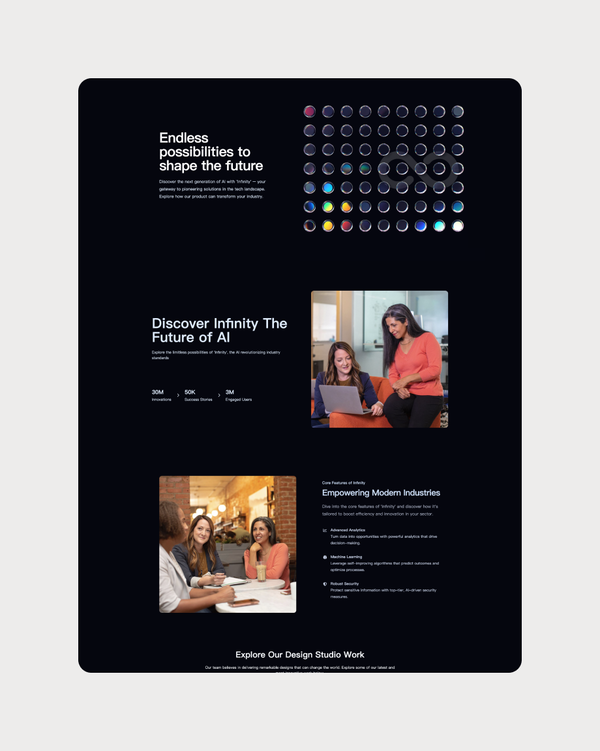Website Name Generator Tool Challenges
Website Name Generator Tool Resources
Website Name Generator Tool
Search Engine Optimization (SEO) is a crucial aspect of digital marketing that helps websites improve their visibility and ranking on search engine results pages (SERPs). However, SEO is a constantly evolving field, with search engines frequently updating their algorithms and ranking factors. This makes it essential for businesses to regularly audit their SEO techniques to ensure they are up-to-date and effective.

Website Name Generator Tool Best Practices
Website Name Generator Tool
1. Wix
Wix is a popular website builder that offers a user-friendly interface and a wide range of design templates to choose from. With Wix, small businesses can easily create a professional-looking website without any coding skills. The drag-and-drop editor makes it easy to customize your site to fit your brand and business needs. In addition, Wix offers a free plan that includes Wix branding and a subdomain, making it a great option for small businesses on a tight budget.
2. WordPress
WordPress is one of the most popular content management systems (CMS) in the world, powering millions of websites. While WordPress is known for its flexibility and customization options, it can be a bit intimidating for beginners. However, WordPress.com offers a free plan that allows users to create a basic website with limited customization options. For small businesses looking for more control and flexibility, WordPress.org is a better option, but it requires a hosting plan.
3. Weebly
Weebly is another user-friendly website builder that is perfect for small businesses. With Weebly, users can choose from a wide range of design templates and easily customize their website with drag-and-drop tools. Weebly also offers e-commerce features, making it a great option for small businesses looking to sell products online. While Weebly’s free plan includes Weebly branding and a subdomain, users can upgrade to a paid plan for more features and customization options.
4. Squarespace
Squarespace is a sleek and modern website builder that is perfect for small businesses looking to create a visually stunning website. With Squarespace, users can choose from a range of design templates and customize their site with a drag-and-drop editor. While Squarespace does not offer a free plan, they do offer a 14-day free trial, allowing users to test out the platform before committing to a paid plan.
5. Shopify
Shopify is a popular e-commerce platform that allows small businesses to create an online store. While Shopify is primarily geared towards e-commerce, they also offer a website builder that allows users to create a basic website for their business. With Shopify, users can choose from a range of design templates and customize their site with drag-and-drop tools. While Shopify does not offer a free plan, they do offer a 14-day free trial, allowing users to test out the platform before committing to a paid plan.
One of the most popular free site builders for artists is WordPress. WordPress is a versatile platform that is used by millions of websites around the world. It offers a range of customizable templates and themes that can be easily tailored to suit the needs of any artist. Whether you are a painter, photographer, sculptor, or any other type of visual artist, WordPress provides the tools you need to create a stunning online portfolio.
WordPress is known for its user-friendly interface, making it easy for even the least tech-savvy artists to build and maintain their website. The platform also offers a wide range of plugins that allow you to add features such as image galleries, contact forms, and social media integration. With WordPress, you can create a professional-looking website that showcases your work in the best possible light.
Another free site builder option for artists is Wix. Wix is a drag-and-drop website builder that is perfect for artists who want to create a visually stunning website without needing to know how to code. Wix offers a range of customizable templates that can be easily customized to suit your artistic style. Whether you are looking to create a simple portfolio website or a more complex online gallery, Wix provides the tools and resources you need to bring your vision to life.
Wix also offers a number of features specifically designed for artists, such as a built-in image editor that allows you to easily crop, resize, and enhance your images. The platform also offers integration with popular social media platforms, making it easy to share your work with a wider audience. With Wix, you can create a professional website that showcases your artwork and helps you connect with potential buyers and fans.
Squarespace is another popular free site builder option for artists. Squarespace offers a range of professionally designed templates that are perfect for showcasing visual artwork. Whether you are a photographer, illustrator, or designer, Squarespace provides the tools you need to create a beautiful and functional website. The platform also offers a range of features, such as built-in e-commerce capabilities, that make it easy to sell your work directly from your site.
Squarespace is known for its clean and modern design aesthetic, making it a great choice for artists who want to create a stylish and sophisticated online presence. The platform also offers a range of customization options, allowing you to tailor your website to suit your unique style and brand. With Squarespace, you can create a professional website that showcases your artwork in the best possible light.

How to Master Website Name Generator Tool
Website Name Generator Tool
In today’s digital age, having a visually appealing and user-friendly website is crucial for the success of any business. A well-designed website can help attract new customers, build credibility, and increase conversion rates. However, designing a website is not as simple as it may seem. It requires a strategic and systematic approach to ensure that the final product meets the needs and expectations of both the business and its target audience. In this article, we will discuss the website design process in detail, outlining the key steps involved in creating a successful website.
Step 1: Define the Purpose and Goals
The first step in the website design process is to clearly define the purpose and goals of the website. This involves identifying the target audience, understanding their needs and preferences, and determining the desired outcomes for the website. For example, is the website meant to generate leads, drive sales, provide information, or showcase products and services? By having a clear understanding of the purpose and goals of the website, you can better tailor the design and content to meet these objectives.
Step 2: Conduct Research
Once the purpose and goals of the website have been defined, the next step is to conduct research. This involves analyzing the competition, researching industry trends, and gathering insights into the preferences and behaviors of the target audience. By conducting thorough research, you can gain a better understanding of what works and what doesn’t in your industry, helping you make informed design decisions.
Step 3: Create a Wireframe
After conducting research, the next step in the website design process is to create a wireframe. A wireframe is a visual representation of the layout and structure of the website, showing the placement of various elements such as navigation menus, headers, footers, and content sections. Creating a wireframe allows you to plan the overall design and functionality of the website before moving on to the visual design phase.
Step 4: Design the Visual Elements
Once the wireframe has been finalized, the next step is to design the visual elements of the website. This involves creating a visually appealing and consistent design that reflects the brand identity and resonates with the target audience. Elements such as color scheme, typography, imagery, and layout are carefully considered to create a cohesive and attractive design that conveys the desired message and engages users.
Step 5: Develop the Website
After the visual design has been approved, the next step is to develop the website. This involves coding the design into a functioning website using HTML, CSS, and other programming languages. During the development phase, the website is tested for functionality, responsiveness, and compatibility across different devices and browsers to ensure a seamless user experience.
Step 6: Test and Optimize
Once the website has been developed, it is essential to test and optimize its performance. This involves conducting usability tests to identify any usability issues, testing load times to ensure fast page speeds, and optimizing the website for search engines to improve visibility and accessibility. By testing and optimizing the website, you can ensure that it meets the needs and expectations of users, leading to better engagement and conversions.
Step 7: Launch and Monitor
The final step in the website design process is to launch the website and monitor its performance. This involves deploying the website to a live server, promoting it to the target audience, and tracking key metrics such as traffic, engagement, and conversions. By monitoring the performance of the website, you can identify areas for improvement and make informed decisions to optimize its effectiveness over time.

